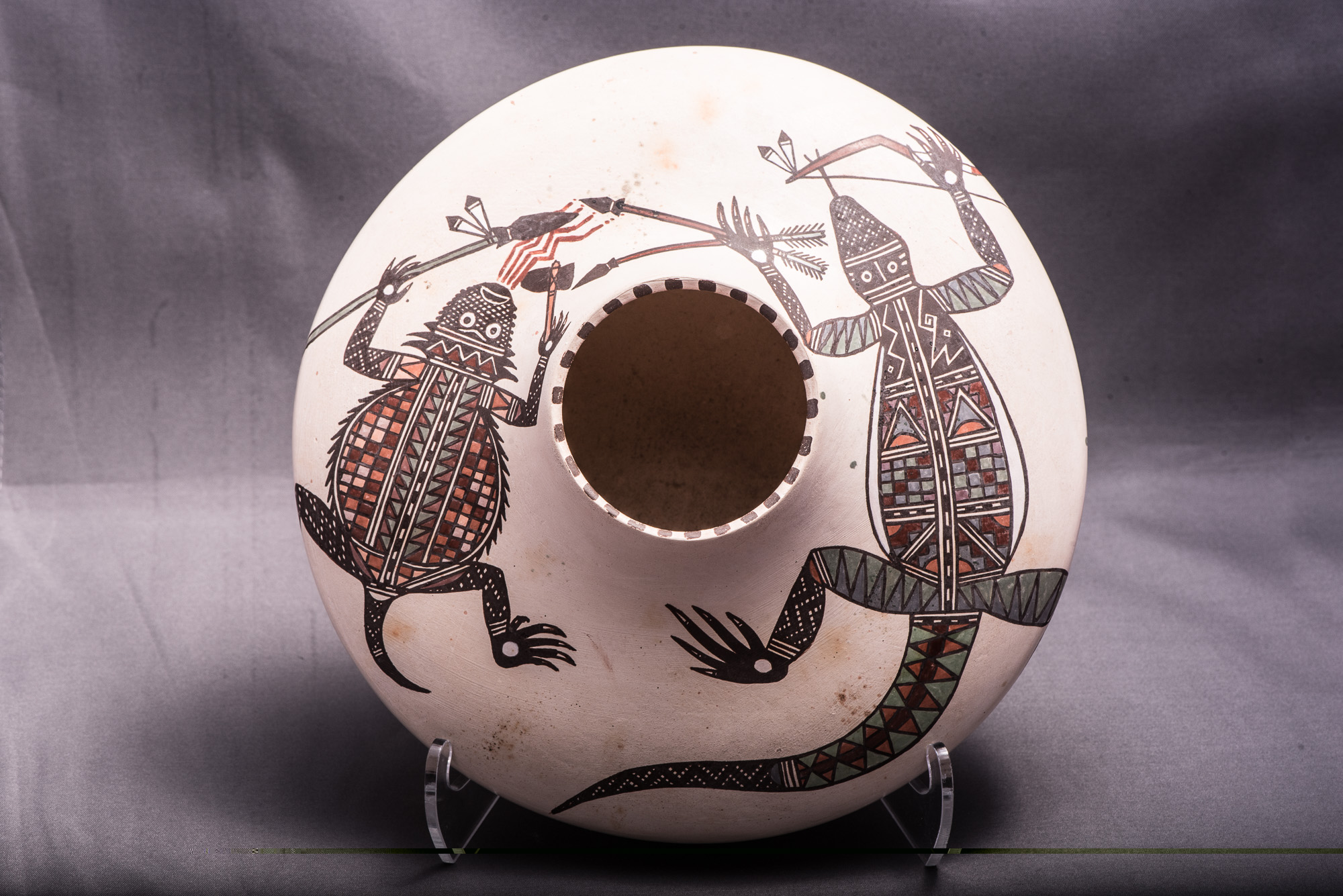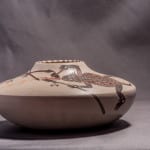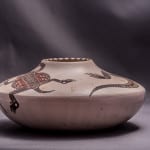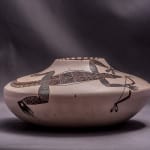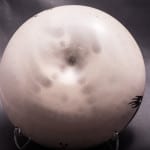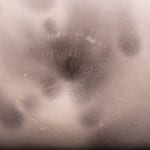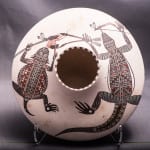This pot is exceptionally thin-walled and therefore light, as if formed on a potter’s wheel. A slight variation in form can be felt inside the bowl, the only visible indication that it was coil-formed. As detailed in the description for jar 2013-01, Nathan only formed pots using coils, but even his early work is so perfectly formed and thin that his oeuvre may be the most delicate ever produced in a Hopi-Tewa tradition.
[Nathan was of mixed Navajo/Hopi parentage, worked for a time in Tuba City, just on the edge of the Hopi Reservation and then lived in both Santa Fe and Phoenix. On any topic it is almost impossible to write a simple sentence that describes this complex man. See the discussion for jar 2013-01 for a more complete description of his short life.]
As Charles King notes below, the pot was kaolin slipped and then polished. Since the interior of the pot is also almost pure white, I am uncertain about the nature of the clay body. Given the unblemished white interior, I’d guess that I am looking at the white clay that forms the body of the piece and that the clay might not be from the Hopi Reservation. It seems less likely that this is traditional Hopi clay that fires yellow but is covered inside with a white unpolished slip.
The pot is scratch signed on the bottom “Nathan B/Hopi—Navajo,” followed by a rain cloud design and the date of production “1-16-00.”
Although rooted in tradition, Nathan was unbounded by convention and thus each of his pots is sui generis and challenging.
As explained by Charles King (below) the bowl is a narrative story of horned toad and lizard warriors hunting ants for their food. The design is painted on the top surface of the pot, with the opening representing an ant colony rimed with ants. Each warrior has a portion of his left leg and a part of his weapon extending past the widest edge of the jar and continuing on the underside. The horned toad hunts with a spear in his left hand and a stone hatchet in his right. Fierce fire (?) emerges from his mouth. His companion lizard carries two arrows in his left hand and his bow in his right hand. His forked tongue flickers,
While large areas on the pot surface are unpainted, thus framing the design, the painted areas of 2014-04 are colored with detailed and intricate black and multicolored patterns. Jake Koopee was 12 years Nathan’s junior; both led tragically short lives. I think only Jake could form pots so thin (1995-14) or paint so precisely (2004-08 and 2013-08) that they come close to rivaling Nathan’s work. Nathan’s painting on seedpot 2014-04 is the most detailed, intricate and controlled that I have ever seen on a piece of southwestern Native pottery. “Extraordinary” does not do justice to this painting.
Six natural clay colors are used in the decoration, the same colors used on another intricately painted pot by Nathan in the collection (2013-10): maroon, pink, pale purple-pink, blue, orange and black. The flanks of the horned toad and a small portion of the lizard are covered with the same pattern of small checks as found on pot 2013-10, though the patterns of color differ. The heads of the two animals, the ends of their feet and tails are painted with a crosshatch of black paint so small that it seems impossible to draw accurately. It’s a matter of taste, I suppose, but these crosshatched patterns might be the most impressive drawing in the collection. A variety of triangular forms and zigzag lines compose most of the remaining decoration. The designs on the two bodies are recognizably “southwest,” but are so intricate that any attempt to verbally describe them would simply obfuscate their visual impact. I defer.
For all the care in painting, there are several drips and splatters of blue paint that seem random and either are an accident or have some meaning that was known only the Nathan, perhaps a joke.
The narrative story and detail of painting on 2014-04 are unlike anything else in the collection, a comment about uniqueness that can be made about each of the Nathan Begaye pots in the collection. (See the Artist List.) Every time I see pot 2014-04 I smile and am left in wonder of its creator’s talent.
I bought this pot from Charles King. He wrote in the description: “This is a fascinating piece by Nathan Begaye. It was made in 2000 when he was living here in Phoenix. I remember him telling me the story about the design on this pot. It has the lizard on one side and the horned toad on the other side. The (neck) area in the center is meant to be an anthill and the dots on the rim are ants. The two lizard ‘warriors’ are circling the anthill getting ready to eat. It’s not just a great story and use of form and design, but check out the painting on the bodies of the lizards. Each of the small checkerboard patterns is a different clay slip and they are all stone polished! It was amazing to watch him work and spend so much time on each of the sections. …It is a spectacular piece of his innovative pottery!”

